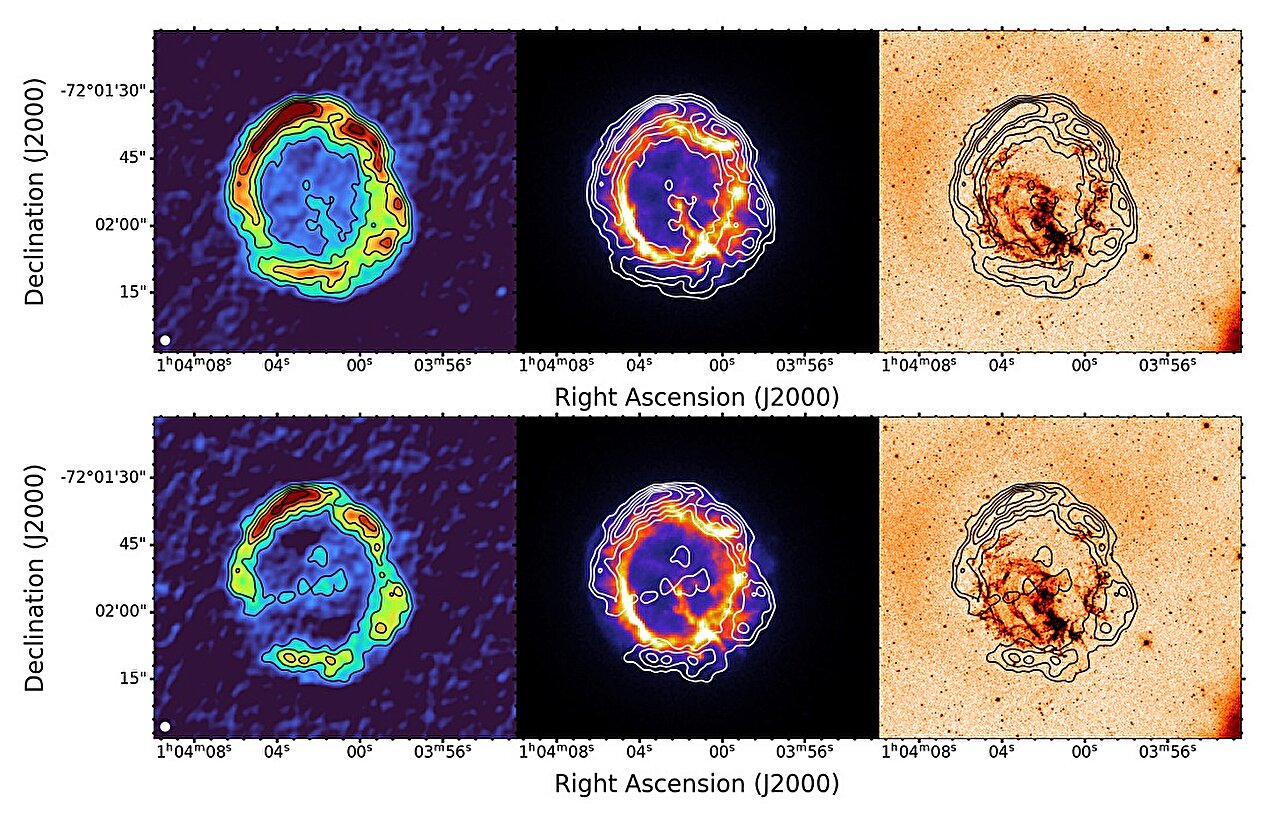Using the Australia Telescope Compact Array (ATCA) and the Atacama Large Millimeter/submillimeter Array (ALMA), an international team of astronomers has observed a supernova remnant known as 1E 0102.2–7219. Results of the study, presented October 27 in the Monthly Notices of the Royal Astronomical Society journal, shed more light on the properties and nature of this remnant.
In general, supernova remnants (SNRs) are diffuse, expanding structures resulting from a supernova explosion. Observations show that SNRs contain ejected material expanding from the explosion and other interstellar material that has been swept up by the passage of the shockwave from the exploded star.
Discovered in 1981, 1E 0102.2–7219 (or E0102 for short) is a young core-collapse SNR in the Small Magellanic Cloud (SMC)—a dwarf galaxy orbiting the Milky Way. It showcases a bright, filled ring-like structure with an outer edge that traces the forward-moving blast wave. Previous observations have found that E0102 has an age of 1,738 years and its progenitor mass is estimated to be most likely between 32 and 50 solar masses.
Now, a group of astronomers led by Rami Z. E. Alsaberi of the Western Sydney University in Penrith, Australia, decided to investigate E0102 with ATCA and ALMA in order to get more insights into its properties.
“Here, we present new high-resolution and high-sensitivity radio-continuum observations of E0102 obtained from ATCA and ALMA,” the researchers wrote in the paper.
2023-11-04 03:41:02
Source from phys.org


















